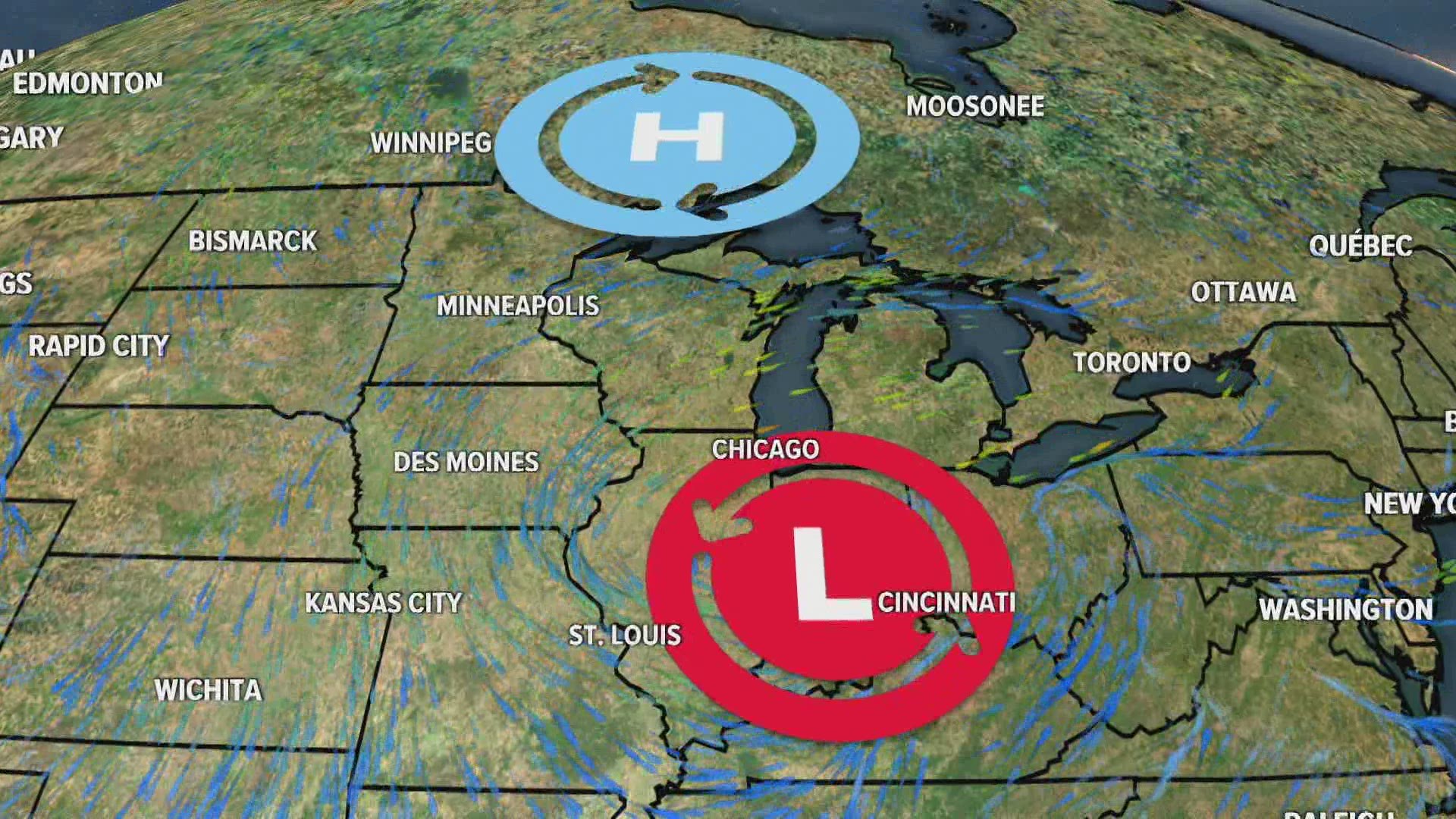DES MOINES, Iowa — It may not seem like it, but the air that surrounds us has a weight thanks to gravity.
The force applied by the atmosphere above a given surface is more commonly known as atmospheric pressure.
In fact, the average weight of the atmosphere is 14.7 pounds per square inch.
The higher the elevation, the lower the pressure.
Ever wonder why your ears pop on airplanes? It is because the air pressure is falling as the plane climbs higher in the sky.
Your inner ear has air from ground level trapped inside of it. That popping is your body's way of equalizing the pressure inside your ear to the surrounding environment.
The change in pressure with height is a simple concept, but explaining why pressure changes at a given point is more complicated.
Pressure is directly related to air density, and air density is most commonly affected by changes in temperature, humidity, and rising or sinking air.
All other things being equal, warming the air, increasing humidity, or rising air results in lower air pressure.
Alternatively, cooling the air, decreasing humidity, or sinking air causes air pressure to increase.
A combination of all of these factors ultimately determines what pressure we end up with on the Earth's surface.
RELATED: WEATHER LAB | How tornadoes form
Changes in pressure combined with the rotation of the Earth create the flow of wind as air naturally moves from high pressure to low pressure.
The sinking air associated with high pressure usually leads to clear skies and calm winds.
Temperatures in high pressure systems can be either warm or cool depending on where they develop.
Low pressure often leads to stronger winds, cloud cover, and precipitation.
Typically temperatures are cooler around low pressure systems, but there are exceptions.
Everything from tornadoes to hurricanes are types of low pressure systems.

